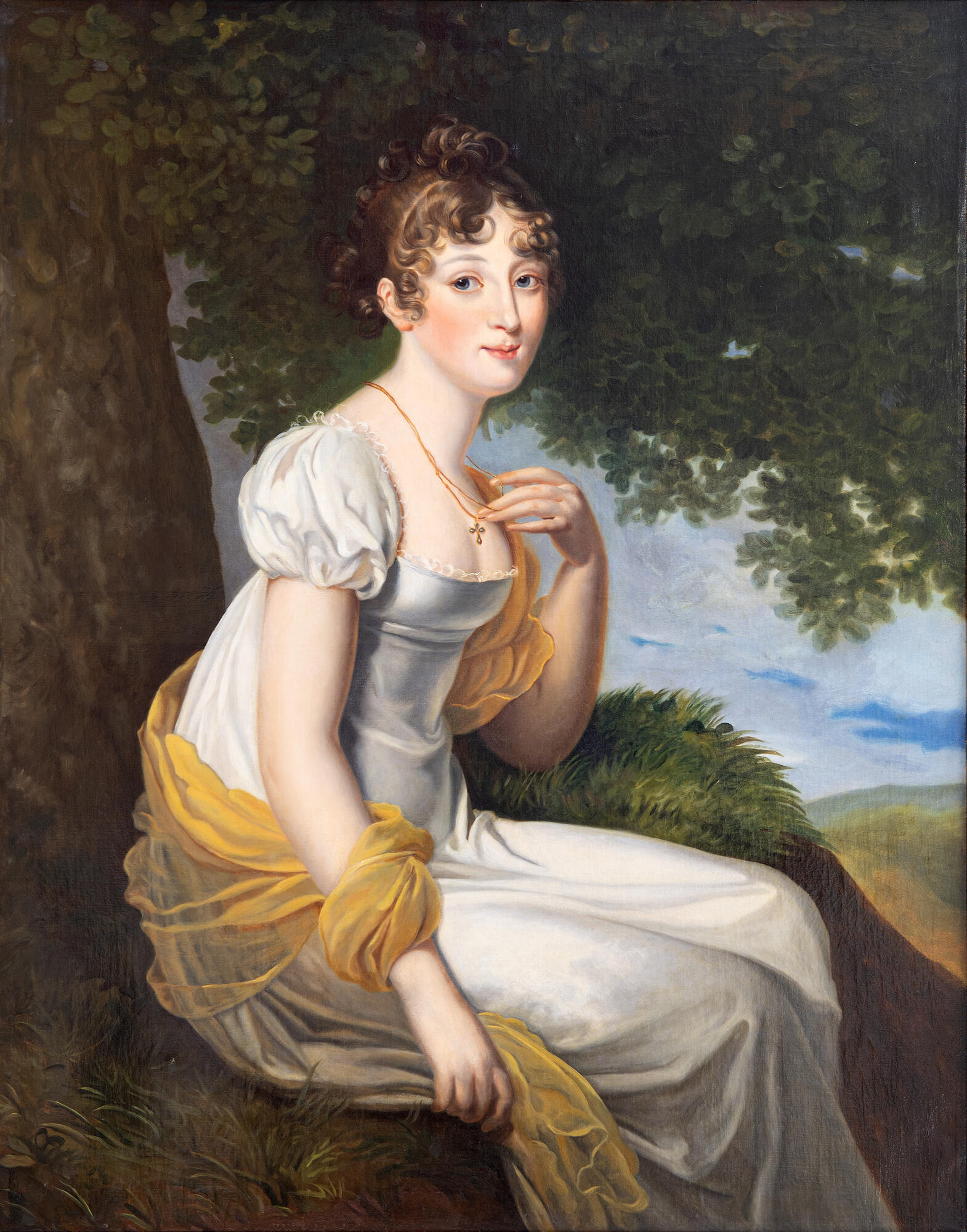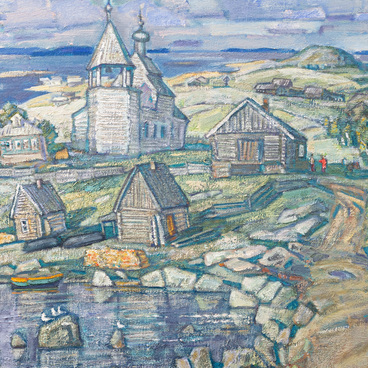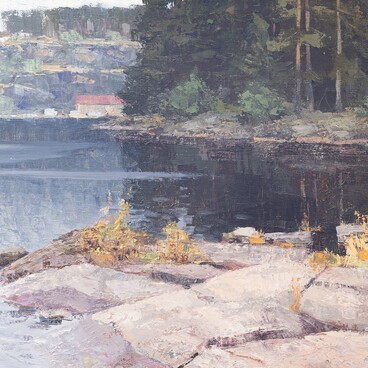The museum exhibits a copy of the painting “Portrait of Grand Duchess Anna Pavlovna” painted by an unknown artist. The original was painted by the German painter Carl Siegmund Walther and is housed in the Gatchina State Museum-Reserve.
The work reflects the art trends characteristic of the era of Sentimentalism. Anna Pavlovna was the sixth daughter of Paul I and the sister of the Russian emperors Alexander I and Nicholas I. She was born in 1795 in Saint Petersburg. The Grand Duchess received an excellent home education: she studied French and German, painting and music, as well as the basics of mathematics and natural sciences. She had a talent for drawing.
The French emperor Napoleon I, wishing to arrange a royal intermarriage with the dynasty of Russian rulers, proposed to the princess in 1809, when she was not yet 15 years old. Alexander I gave an evasive answer, referring to Anna’s youth.
Alexander I seriously considered the possibility of a marriage between Grand Duchess Anna and Prince William of Orange, the eldest son of King William I of the Netherlands and heir apparent to the Dutch throne. On January 28, 1816, Grand Duchess Anna Pavlovna was solemnly engaged to Prince William of Orange, and on February 9, 1816, a magnificent wedding ceremony took place in the church of the Winter Palace.
In the history of Russian-Dutch relations, the name of the Dutch Queen Anne occupies a special place. Having become the Queen of the Netherlands, Anna Pavlovna closely followed literature, art and science, studied the Dutch language and the history of the country, and was engaged in charitable activities. However, she never lost spiritual ties with Russia. At her request, materials relating to Russian-Dutch relations were compiled. In 1861, this priceless collection entered the Imperial Academy of Sciences. Thus, materials on the history of Russian-Dutch relations, including church relations, became the subject of science.
A street and a square were named after Anna Pavlovna in the Hague, and a monument was erected there. And in the north of the Netherlands, a small town is named after the Grand Duchess. In the city of Anna Paulowna, a monument by Alexander Taratynov — a bronze equestrian statue of the queen — was opened.
The work reflects the art trends characteristic of the era of Sentimentalism. Anna Pavlovna was the sixth daughter of Paul I and the sister of the Russian emperors Alexander I and Nicholas I. She was born in 1795 in Saint Petersburg. The Grand Duchess received an excellent home education: she studied French and German, painting and music, as well as the basics of mathematics and natural sciences. She had a talent for drawing.
The French emperor Napoleon I, wishing to arrange a royal intermarriage with the dynasty of Russian rulers, proposed to the princess in 1809, when she was not yet 15 years old. Alexander I gave an evasive answer, referring to Anna’s youth.
Alexander I seriously considered the possibility of a marriage between Grand Duchess Anna and Prince William of Orange, the eldest son of King William I of the Netherlands and heir apparent to the Dutch throne. On January 28, 1816, Grand Duchess Anna Pavlovna was solemnly engaged to Prince William of Orange, and on February 9, 1816, a magnificent wedding ceremony took place in the church of the Winter Palace.
In the history of Russian-Dutch relations, the name of the Dutch Queen Anne occupies a special place. Having become the Queen of the Netherlands, Anna Pavlovna closely followed literature, art and science, studied the Dutch language and the history of the country, and was engaged in charitable activities. However, she never lost spiritual ties with Russia. At her request, materials relating to Russian-Dutch relations were compiled. In 1861, this priceless collection entered the Imperial Academy of Sciences. Thus, materials on the history of Russian-Dutch relations, including church relations, became the subject of science.
A street and a square were named after Anna Pavlovna in the Hague, and a monument was erected there. And in the north of the Netherlands, a small town is named after the Grand Duchess. In the city of Anna Paulowna, a monument by Alexander Taratynov — a bronze equestrian statue of the queen — was opened.



